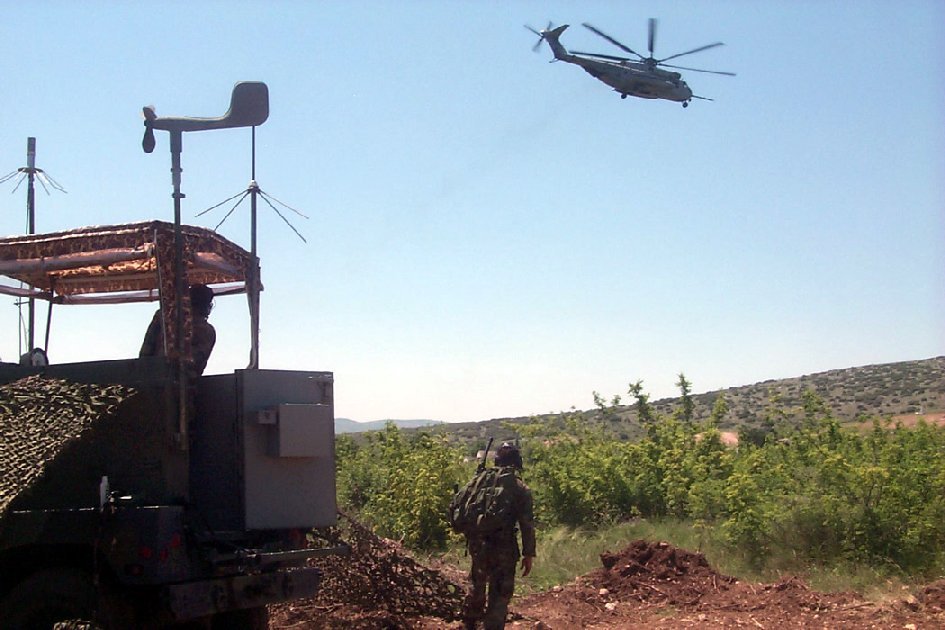|
|
|

Air traffic controllers from MACS-2 watch a CH-53 "Shitter" depart from the landing zone in an AN/TRC-195 "Duck Blind".

To fulfill
its expanding role in contingencies around the globe, the Marine Corps
must maintain its
expeditionary capabilities.
Here at Camp Assiros, Greece, one prime example of the Corps' any-clime-and-place
nature is the Forward Arming and
Refueling Point.
If the situation
calls for it, helos can make a quick return from the battlefields of the
field training exercise area to the east -- where 2d Marine Aircraft Wing
aircraft will support
6th Marines ? to take on enough fuel and ammunition to return to the fight.
The same holds true for helicopters flying in support of the
multi-national battalion
conducting training at Camp Polykastro, Greece, north-east of here.
Once MASS-1 has brought
the helos within range, a Marine Air Control Squadron 2 air traffic controller
takes the reigns from a field radio tower near the
FARP landing zone.
The tower guides craft within a five-mile radius to the landing zone where
the '272 Marines are waiting with precious fuel. The field
radio tower is also
equipped with all the tools necessary to give pilots all the information
they need to land safely, including basic weather information.
Cpl. Kirk Witkowski,
one of four MACS-2 air traffic controllers working at the FARP, said one
of the tower's best design features is the fact that it's
mounted on a Humvee,
making it completely mobile at a moment's notice. "It'll get you from here
to there real quick," said the Saginaw, Mich., native.
Whether it's extending
flight capability, hastening the return of air support to ground troops,
or getting help to an injured Marine or NATO troop, the FARP
stands ready. From
CH-53s to German UH-1 search and rescue helicopters, the FARP Marines are
serving all in support of Exercise Dynamic Mix 2000,
highlighting the
Corps' ability to overcome the challenges of any field environment and
integrate seamlessly into a multi-national force.